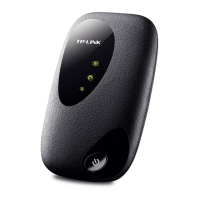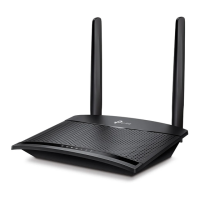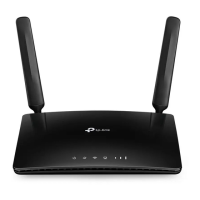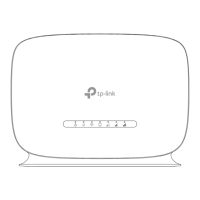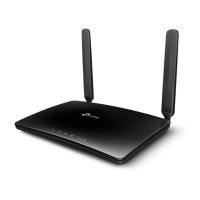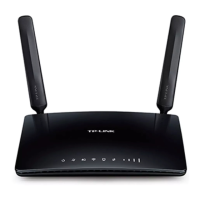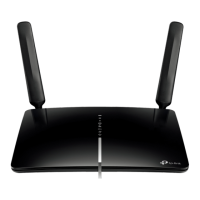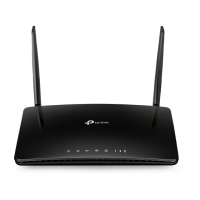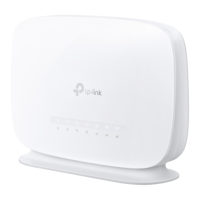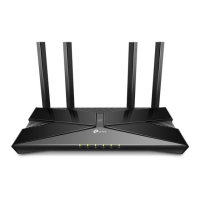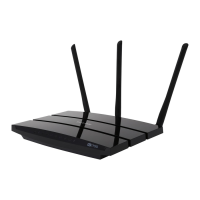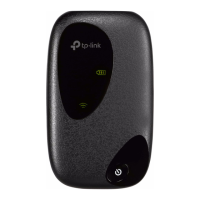
Do you have a question about the TP-Link M7010 and is the answer not in the manual?
| DSL WAN | - |
|---|---|
| Ethernet WAN | No |
| SIM card slot | Yes |
| USB port type | Micro-USB |
| Micro-USB ports quantity | 1 |
| Device type | Cellular network router |
| Product type | Portable router |
| Product color | Black |
| LED indicators | Power, WLAN |
| Output current | 1 A |
| Output voltage | 5 V |
| Battery capacity | 2000 mAh |
| Power source type | Battery |
| 4G standard | LTE-FDD |
| 3G standards | HSPA, HSPA+, UMTS |
| Data network | 3G, 4G, LTE |
| SIM card type | MicroSIM |
| 4G bands supported | 2300, 2500, 2600 MHz |
| UMTS bands supported | 850, 900, 2100 MHz |
| Wi-Fi band | Single-band (2.4 GHz) |
| Wi-Fi standards | 802.11b, 802.11g, Wi-Fi 4 (802.11n) |
| Top Wi-Fi standard | Wi-Fi 4 (802.11n) |
| WLAN data transfer rate (max) | 300 Mbit/s |
| Transmit power | 20 dBmW |
| Security algorithms | SSID, WPA-PSK, WPA2-PSK |
| Mobile operating systems supported | Android, Windows Phone, iOS |
| Windows operating systems supported | Windows 10, Windows 7, Windows 8, Windows Vista, Windows XP |
| Sustainability certificates | CE, RoHS |
| Storage temperature (T-T) | -20 - 60 °C |
| Operating temperature (T-T) | 0 - 35 °C |
| Storage relative humidity (H-H) | 5 - 90 % |
| Operating relative humidity (H-H) | 10 - 90 % |
| Networking standards | IEEE 802.11b, IEEE 802.11g, IEEE 802.11n |
| Package depth | 95 mm |
| Package width | 135 mm |
| Package height | 50 mm |
| Package weight | 150 g |
| Depth | 56.7 mm |
|---|---|
| Width | 94 mm |
| Height | 19.8 mm |
Allows selection of network connection modes (4G Preferred, 4G Only, 3G Only).
Enables creating and configuring APN profiles for internet access.
Allows dynamic assignment of IP parameters to connected devices.
Explains power saving features like Wi-Fi range and auto-disable time.
Allows changing the login password for the web management page.
Configures the system time for time-based functions.
Explains restoring the device to factory defaults, clearing all configurations.
Details how to update the device firmware for improved features.
Allows updating Internet Service Provider (ISP) information for connectivity.
Explains how to save and send system logs for troubleshooting.
Explains the symbols and formatting used throughout the user guide.
Provides links to download resources and additional product information.
Details the features and benefits of the Mobile Wi-Fi device for users.
Explains the external and internal components of the Mobile Wi-Fi.
Details the external components, including ports, buttons, and LEDs.
Explains the internal components, such as the SIM card slot and reset button.
Provides step-by-step instructions for inserting the SIM card and battery.
Guides on powering on the device and connecting wireless devices to the network.
Details using the tpMiFi mobile app for device login and management.
Explains logging in via the web management interface on a computer.
Guides on logging in using the mobile web management interface.
Allows users to monitor their data consumption on the Mobile Wi-Fi.
Shows how to view data usage details within the tpMiFi mobile app.
Explains obtaining data usage information by sending an SMS to the carrier.
Enables manual correction of displayed data usage figures for accuracy.
Enables setting data limits for packages to control overall usage.
Sets data package limits, usage alerts, and automatic internet disabling.
Configures monthly data limits, alerts, and start date for tracking.
Allows setting individual data usage limits for connected devices.
Enables limiting Wi-Fi speed for specific connected devices.
Allows specifying a free data period where usage is not charged or limited.
Details how to enable mobile data access for connected devices.
Explains how to enable data roaming for internet access outside the service area.
Guides on customizing Wi-Fi name (SSID) and password for network security.
Allows restricting specific devices from accessing the wireless network.
Enables PIN lock for the SIM card, requiring a PIN to access the internet.
Allows selection of network connection modes (4G Preferred, 4G Only, 3G Only).
Enables creating and configuring APN profiles for internet access.
Details filling APN parameters like Profile Name, PDP Type, APN, and Auth Type.
Explains network search modes (Auto and Manual) for establishing connection.
Allows dynamic assignment of IP parameters to connected devices.
Explains power saving features like Wi-Fi range and auto-disable time.
Allows changing the login password for the web management page.
Configures the system time for time-based functions.
Explains restoring the device to factory defaults, clearing all configurations.
Details how to update the device firmware for improved features.
Allows updating Internet Service Provider (ISP) information for connectivity.
Explains how to save and send system logs for troubleshooting.
